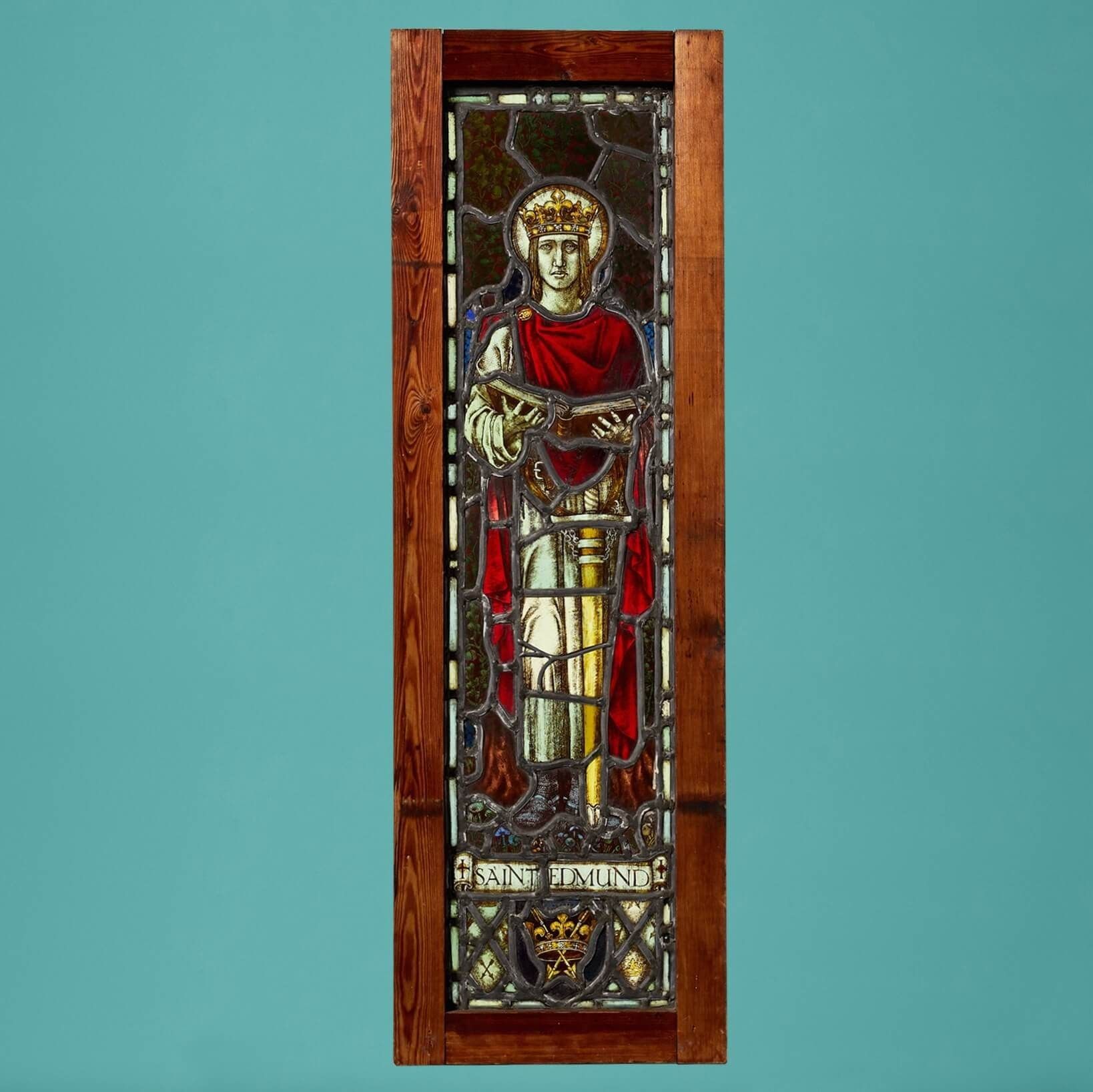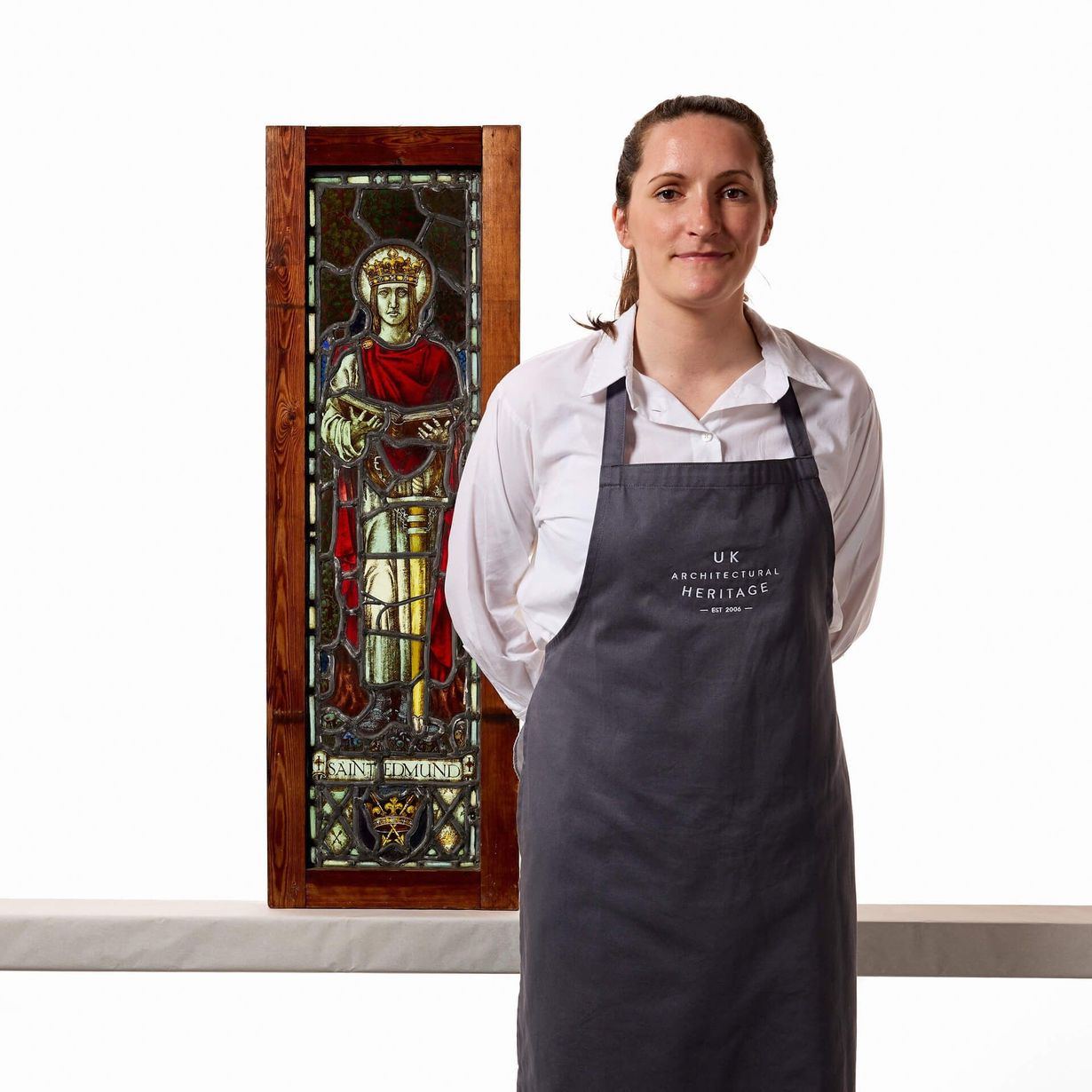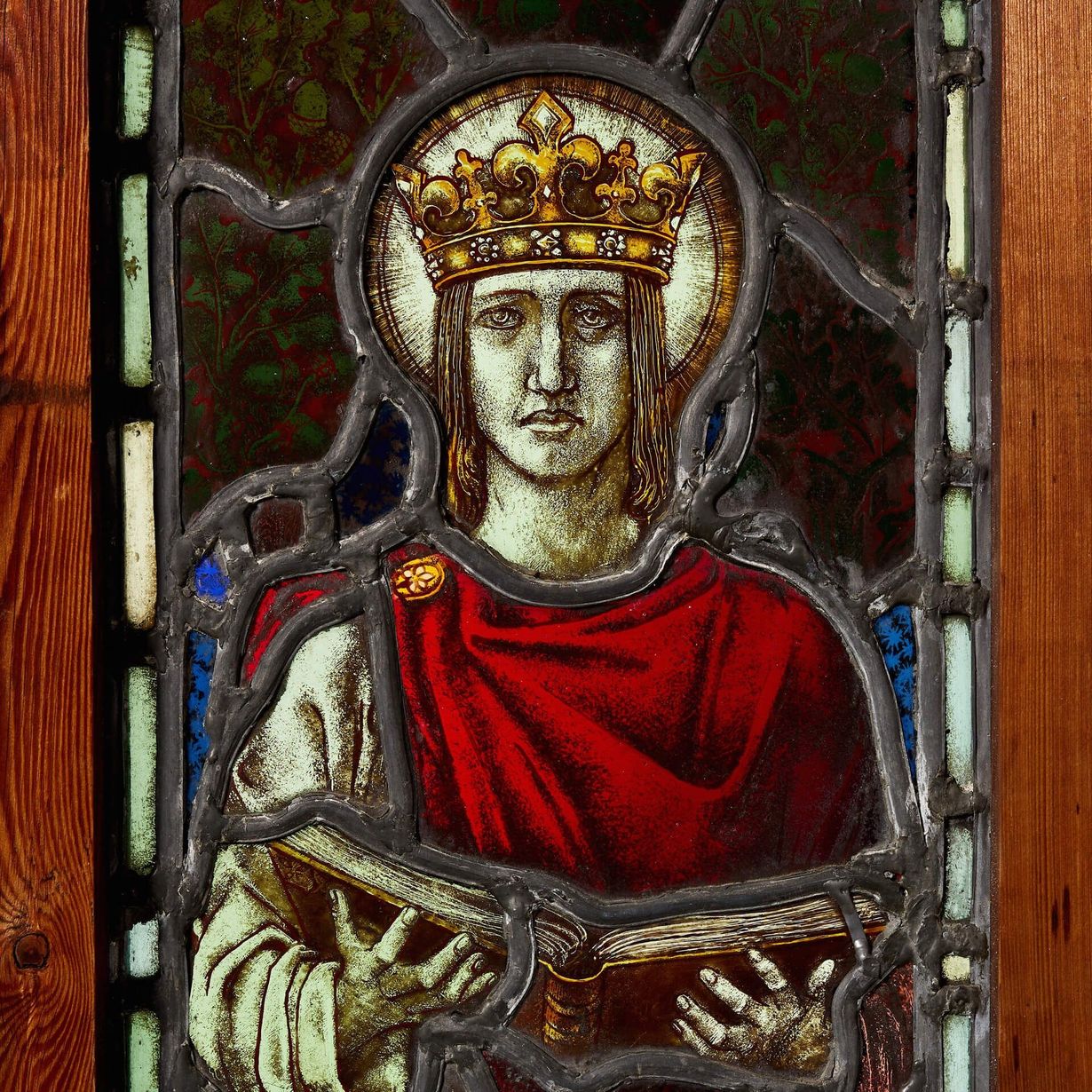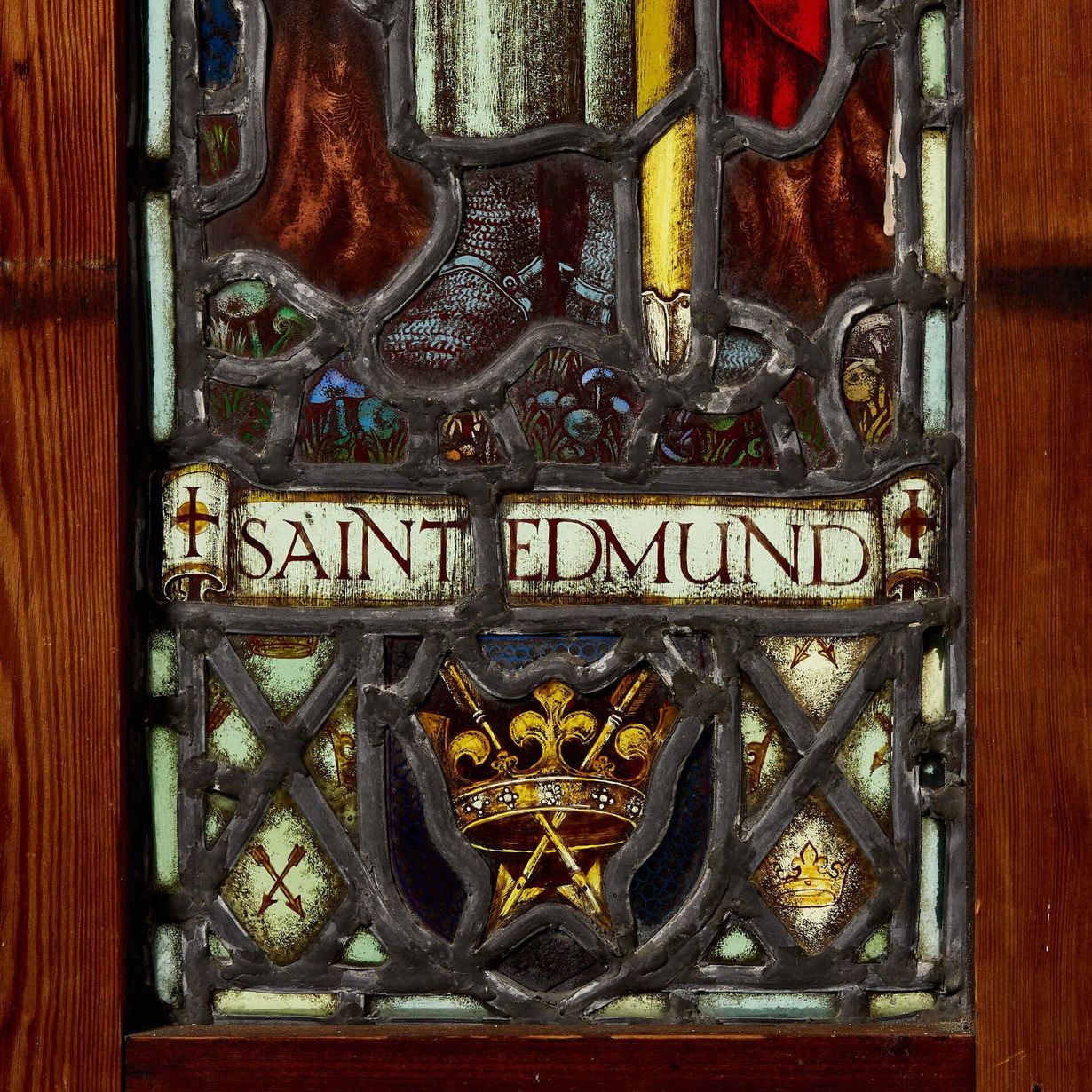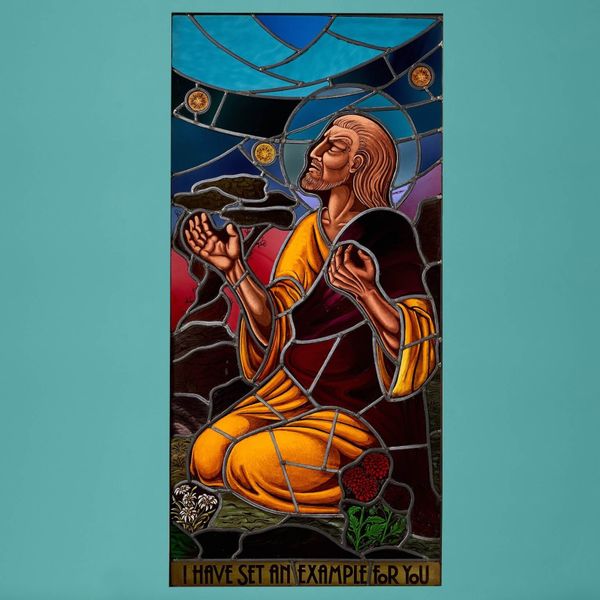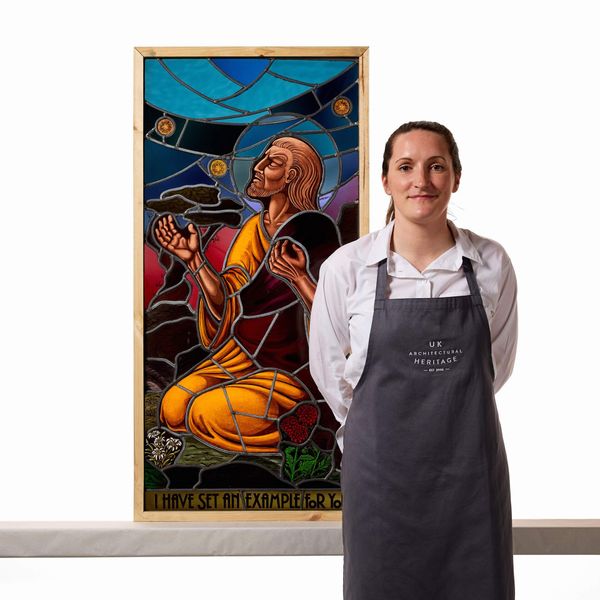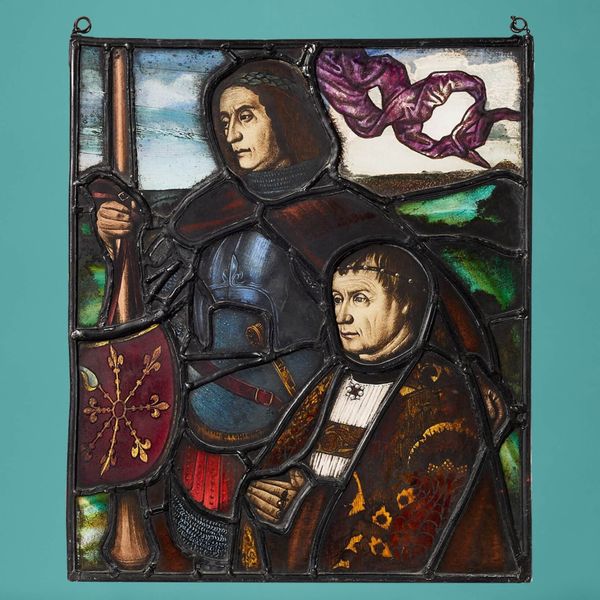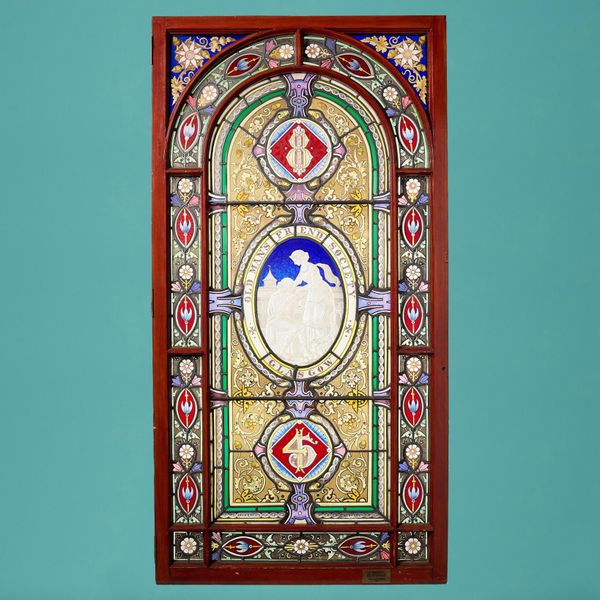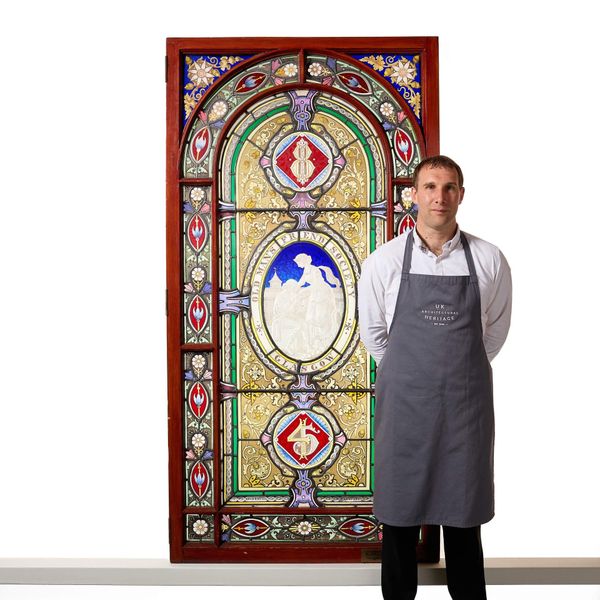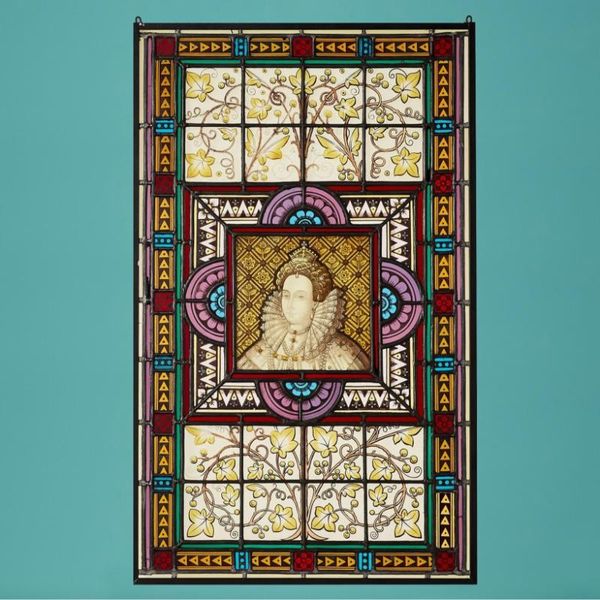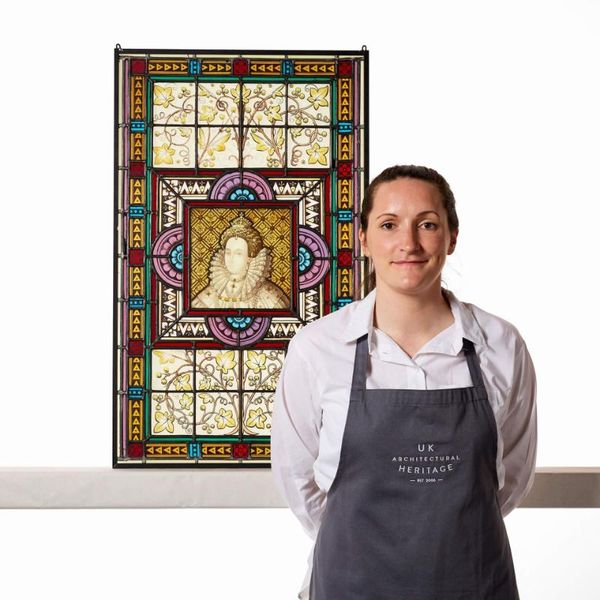About this piece
back to topAn antique ecclesiastical stained glass window of Saint Edmund reclaimed from Beeleigh Abbey. This dramatic stained glass window reads ‘Saint Edmund’ on a religious scroll. Competently painted, this window is a stunning and detailed interior feature inspired by this religious figure.
The vivid colours accompanied by Saint Edmund’s vacant stare would look striking flooded with daylight in a traditional home, a sympathetically decorated converted chapel or ecclesiastical building.
Provenance
Christopher Foyle, and his wife Catherine, completed their award-winning restoration of their historic family home Beeleigh Abbey, in Maldon, England. The abbey was left to the Foyle Foundation, a charity for learning, education and art.
The abbey was founded in 1180 for canons of the premonstratensian order, by Robert de Mantell, Lord of the Manor of Little Maldon and Sheriff of Essex. The abbey was later issued with a royal charter by Kind Richard I in 1189.
A wide variety of garden projects have been added since, giving it a further sense of scale and peace within the historical setting. This stained glass is a piece of this historical buildings important heritage.
Christopher Foyle
Mr Foyle was also known for his celebrated Foyles Bookshop on Charing Cross Road, London. He opened multiple outlets after inheriting it from his aunt, before selling the business to Waterstones in 2018.
Mr Foyle has since died, but recognition for his work on the abbey continues.
Saint Edmund
The title Saint of England now sits with St George, who is celebrated on St George’s Day every year, but Anglo-Saxon king Saint Edmund, or Edmund the martyr, King of East Anglia in the 9th century AD, was the original patron.
Before his death, Edmund fought the pagan Viking and Norse invaders until 869-70. But he was defeated and captured by the vikings, who ordered him to renounce his Christian faith. Edmund would not and was consequently tied to a tree, shot with arrows, and beheaded.
His body and head were later recovered and King Canute built a stone abbey for his shrine in 1020. For centuries it was patronised by the kings of England and became wealthy as the following of St Edmund grew.
But St Edmund’s influence began to fade when, during the Third Crusade in 1199, King Richard I visited the tomb of St. George in Lydda on the eve of battle.
Following this victory the next day, King Richard adopted St. George as his personal patron and protector of the army, making him the new Saint of England.
Addition information
Currently housed in a temporary wooden frame – the overall dimensions are for the stained glass only, not the frame.
